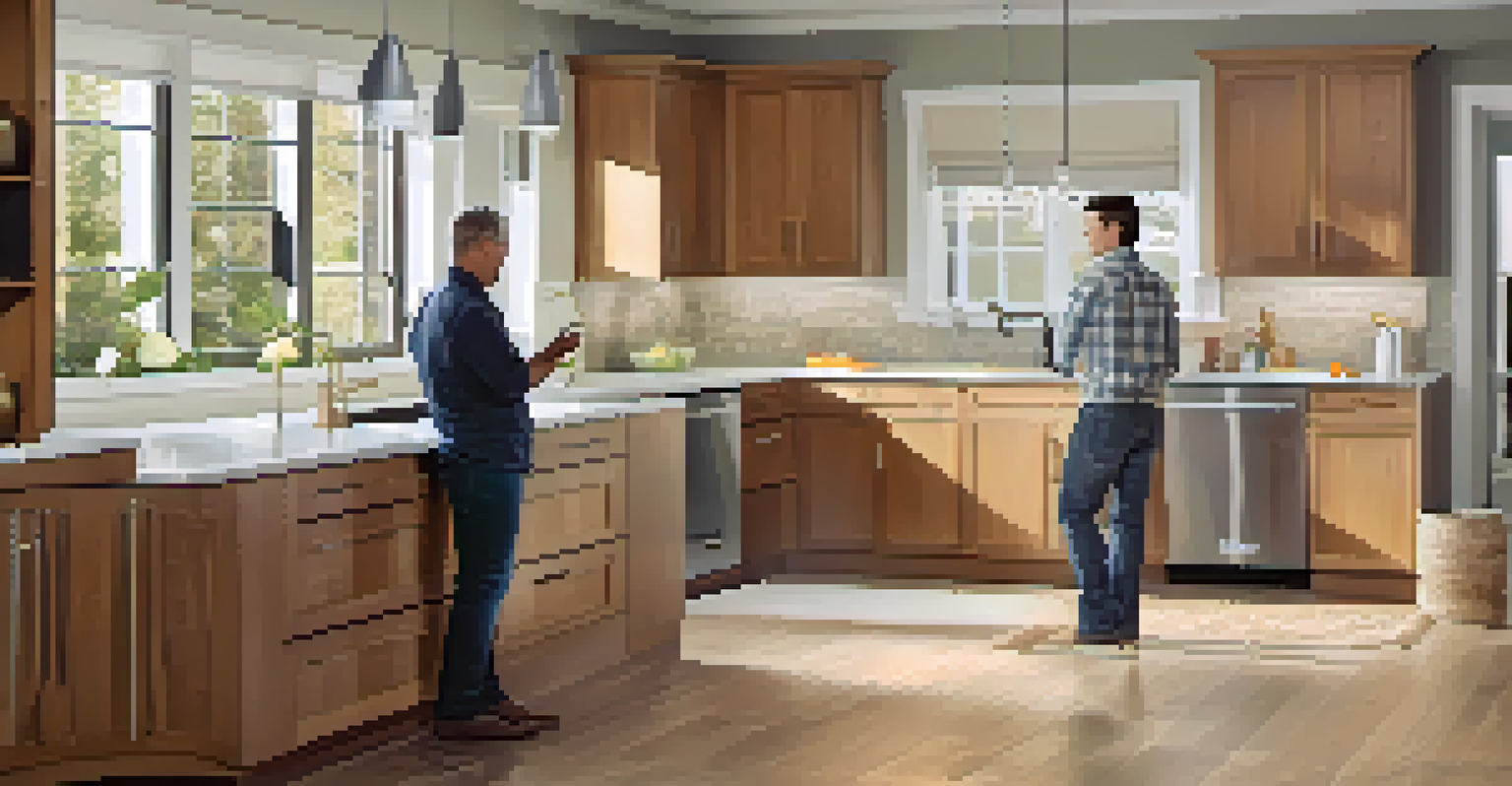Failing to Account for Hidden Costs in Renovations

Understanding Hidden Costs in Home Renovations
When embarking on a home renovation, it's easy to focus solely on the big-ticket items like kitchen cabinets and new flooring. However, hidden costs can sneak up on you if you're not careful. These are expenses that often get overlooked yet can significantly impact your overall budget.
The only way to do great work is to love what you do.
For instance, unexpected structural repairs, permits, and even design fees can add hundreds to thousands of dollars to your project. This is why it’s crucial to have a comprehensive plan that includes these potential costs. A well-prepared homeowner can save both time and money by anticipating these expenses.
Understanding these hidden costs allows you to set a realistic budget and avoid financial strain later on. Remember, knowledge is power when it comes to home renovations!
Common Hidden Costs to Look Out For
One of the most common hidden costs in renovations is the need for permits. Depending on your location and the scope of your project, permits can range from minimal fees to several thousand dollars. Always check local regulations to avoid unexpected fines or delays.

Another hidden cost comes from unforeseen repairs. If you're tearing down walls or ripping up floors, you might discover mold or structural damage that needs immediate attention. These repairs can quickly escalate your budget if not accounted for in advance.
Anticipate Hidden Renovation Costs
Understanding potential hidden costs, like permits and unexpected repairs, is crucial for effective budgeting in home renovations.
Lastly, don’t forget about the cost of temporary living arrangements. If your renovation makes your home uninhabitable, you may need to budget for hotel stays or rental properties, which can add up faster than you think.
The Importance of a Detailed Budget
Creating a detailed budget is the backbone of any successful renovation project. It allows you to account for all potential costs, including those pesky hidden expenses. Start by listing all expected costs, then add a cushion for unexpected ones—typically around 10-20% of your total budget.
By failing to prepare, you are preparing to fail.
Having a detailed budget not only helps track your spending but also keeps you accountable. As you move through the renovation process, regularly update your budget to reflect actual costs versus estimated ones. This practice can help you stay on course and make informed decisions as challenges arise.
Remember, a budget isn’t just a number; it’s a roadmap to your successful renovation. The more detailed your budget, the smoother your renovation journey will be.
Consult with Professionals to Avoid Surprises
When it comes to renovations, consulting with professionals can save you from hidden costs down the line. Architects, contractors, and interior designers have experience in spotting potential issues and can help you plan accordingly. Their insights can be invaluable in creating a realistic budget.
For example, a contractor can assess your home’s structure and identify any repairs needed before you start. This upfront analysis can prevent unexpected costs that would otherwise derail your project. Additionally, professionals can provide recommendations on where to splurge and where to save.
Create a Detailed Renovation Budget
A well-prepared budget, including a contingency fund, acts as a roadmap to manage expenses and navigate challenges during renovations.
Ultimately, teaming up with experts not only saves you money but also ensures your renovation goes smoothly. They are your allies in transforming your vision into reality without breaking the bank.
Contingency Planning: The Key to Financial Flexibility
One of the best strategies to handle hidden costs is to have a contingency plan in place. This means setting aside a portion of your budget—typically 10-20%—specifically for unexpected expenses. By planning for surprises, you’ll have the financial flexibility to address any issues as they arise.
A contingency fund acts like a safety net, allowing you to tackle surprises without derailing your entire project. For instance, if you find mold during renovations, your contingency fund can cover the unexpected repair costs without affecting other planned expenses.
Being proactive with contingency planning helps you maintain peace of mind throughout the renovation process. You can focus on transforming your space rather than worrying about unforeseen financial burdens.
The Role of Timing in Managing Costs
Timing can significantly impact the cost of your renovation. If you choose to renovate during peak seasons, such as summer, labor costs may be higher due to increased demand. Planning your project during off-peak times can save you money and give you access to more contractors.
Additionally, delays can lead to increased costs, whether it’s due to waiting for materials or prolonged labor. Staying organized and sticking to a timeline can help keep your renovation on track and within budget. Regular communication with your contractors is key to avoiding unnecessary delays.
Consult Experts for Better Planning
Engaging professionals can help identify potential issues early, ensuring your renovation stays on budget and runs smoothly.
In essence, being mindful of timing not only helps you save money but also ensures a smoother renovation process. It’s one more way to sidestep those hidden costs that can catch many homeowners off guard.
Final Thoughts on Managing Renovation Costs
Managing hidden costs in renovations requires careful planning and awareness. It’s crucial to understand all potential expenses, from permits to unexpected repairs, and to create a detailed budget that accounts for these factors. Consulting with professionals can provide valuable insights that keep your project on track.
Don’t forget to set aside a contingency fund and be mindful of the timing of your renovations. By taking these steps, you can avoid the financial pitfalls that often accompany home improvements, allowing you to focus on creating your dream space.

In the end, a successful renovation is all about preparation and flexibility. With the right approach, you can navigate the complexities of renovations and emerge with a beautiful, functional home.